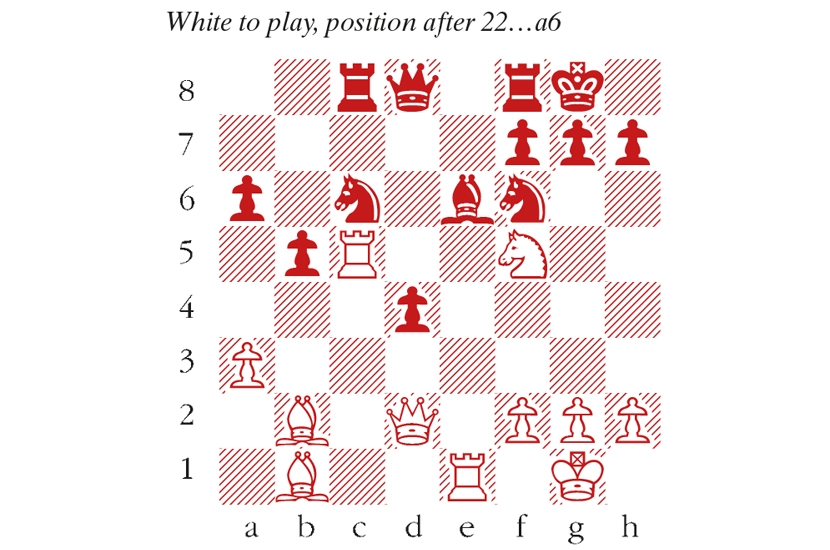Facing Magnus Carlsen, you have two problems. The first is obvious — he’s the best player in the world. The second lies in your awareness of the first. Countless players have seemed bewitched by the world champion, drained of the confidence needed to push for a win. In a single game, a strong grandmaster may well hunker down and steer the game towards a draw, but that’s a doubtful strategy in a long match, where critical mistakes will inevitably occur.
I didn’t credit Hikaru Nakamura with much of a chance against Carlsen in the finals of the Magnus Carlsen Chess Tour, the series of elite online events held over recent months. On paper, he is a strong contender. Online rapid chess plays to Nakamura strengths, and he is even more dangerous in blitz playoffs. But head-to-head, Nakamura has always struggled against the Norwegian. Though he pulled off a surprising match victory against Carlsen in the Lindores Abbey leg of the tour, Carlsen has otherwise shown exceptional form, winning three out of four events on his way to the final.
The match format was exciting, but daunting for the underdog. It was played as a series of seven tennis-style ‘sets’, each consisting of four rapid games, followed by more blitz games in case of a tie and a possible ‘armageddon’ blitz game tiebreak. In a simple series of games, you can attempt to maintain equanimity, and inch ahead at an opportune moment. The ‘tennis’ format means that sooner or later, you will be rattled.
Nakamura came out swinging on the first day and even won the first set. Carlsen struck back to win the second set the following day. That’s the point, I feel, when many players, even very strong ones, would start to crumble. Nakamura, admirably, didn’t seem to care — he kept trying to win games, trading blows on an equal footing. He fumbled some promising positions, but saved some dreadful ones. He took the third set, and lost the fourth. On they went! He won the fifth and lost the sixth. The seventh, decisive set, was still tied after rapid and blitz games, and came down to the armageddon game. Carlsen, playing Black with draw odds, took his chance to construct an impregnable fortress. So, at last, Nakamura lost game, set and match. And yet the timbre of his play was such that this result never looked preordained.
I love games like this attacking masterpiece from the penultimate set. In the diagram, Black looks well placed, but Carlsen’s knight sacrifice and delicate follow-up (25 Qh4!) slice through the black defence like a surgical knife.
Magnus Carlsen–Hikaru Nakamura
Magnus Carlsen Chess Tour Kiva Finals, 2020
1 d4 Nf6 2 c4 e6 3 Nc3 Bb4 4 e3 O-O 5 Bd3 c5 6 Ne2 d5 7 a3 Bxc3+ 8 bxc3 dxc4 9 Bxc4 Qc7 10 Ba2 b6 11 O-O Ba6 12 Bb2 Nc6 13 Rc1 Rac8 14 c4 cxd4 15 exd4 Qe7 16 d5!? An ambitious double pawn sacrifice, opening lines for the bishop pair. exd5 17 Re1 Bxc4 18 Ng3 Qd8 19 Bb1 b5 20 Nf5 d4 21 Qd2 Be6 22 Rc5 a6 (see diagram) 23 Nxg7!! Kxg7 24 Qg5+ Kh8 25 Qh4! The perfect spot for this piece, eyeing d4, f6 and h7. Rg8 25…Re8!? was a devious try, intending 26 Rxc6 Rxc6 27 Bxd4 Bf5! But after 26 h3 I would still prefer White. 26 Rxc6 Rxc6 27 Bxd4 Threatening mate on h7, since the f6 knight is pinned. Kg7 28 Qxh7+ Kf8 29 Qh6+ Ke8 30 Bxf6 Qa5 31 Qe3 Qb6 32 Rd1? 32 Be4 Rd6 33 Qf3 maintains a big edge, as the Black king is so exposed. Rd6! A good shot, but Black’s position remains very hard to defend with little time. 33 Bd4 Qc6 34 Be4 Qc4 35 h3 Kd7 36 Rd2 Re8 37 Kh2 Bd5 38 Bf5+ Be6 39 Bd3 Qa4 40 Be5 Rd5 41 Qa7+ Mate follows on c7 next move, so Black resigns.






Comments